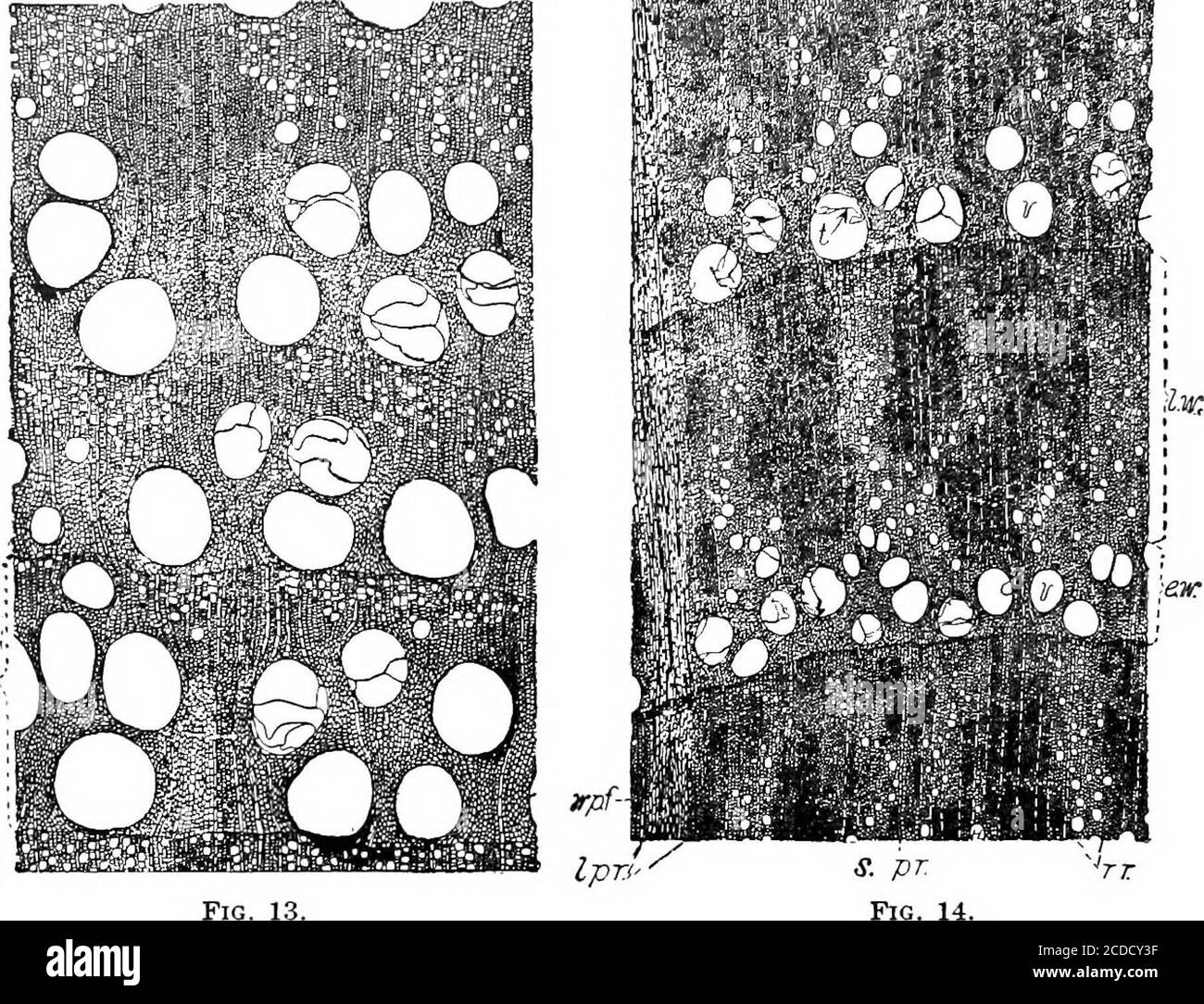. Identification of the economic woods of the United States, including a discussion of the structural and physical properties of wood . difference in structure from those later formed. Theelements are usually thinner-walled, of shorter length, and lessdensely aggregated, so that the inner core of wood is comparativelysoft and weak. In the wood of Dicotyledons, although the elementscharacteristic of the species are all present, their characteristic ar-rangement does not appear clearly until later. This is particularlyevident in the distribution of the vessels and wood parenchyma inmany woods. C

Image details
Contributor:
Reading Room 2020 / Alamy Stock PhotoImage ID:
2CDCY3FFile size:
7.1 MB (799.5 KB Compressed download)Releases:
Model - no | Property - noDo I need a release?Dimensions:
1807 x 1382 px | 30.6 x 23.4 cm | 12 x 9.2 inches | 150dpiMore information:
This image is a public domain image, which means either that copyright has expired in the image or the copyright holder has waived their copyright. Alamy charges you a fee for access to the high resolution copy of the image.
This image could have imperfections as it’s either historical or reportage.
. Identification of the economic woods of the United States, including a discussion of the structural and physical properties of wood . difference in structure from those later formed. Theelements are usually thinner-walled, of shorter length, and lessdensely aggregated, so that the inner core of wood is comparativelysoft and weak. In the wood of Dicotyledons, although the elementscharacteristic of the species are all present, their characteristic ar-rangement does not appear clearly until later. This is particularlyevident in the distribution of the vessels and wood parenchyma inmany woods. Consequently, in the employment of these featuresfor systematic purposes, it is important to use stems of consid-erable thickness rather than small branches or young shoots. 42 ECONOMIC WOODS OF THE UNITED STATES In ring-porous woods of good growth it is usually the middleportion of the ring in which the thick-walled, strength-givingfibres are most abundant. As the breadth of the ring diminishes, this middle portion is reduced so that very slow growth (finegrain) produces comparatively light, porous wood composed IfSpr* Wm H i an.. Fig. 13 Fig. 13.—Querent macrocarpa (bur oak): cross section through three entiregrowth rings showing very large pores in early wood and general absence of dense-walled wood fibres. Such wood is light, soft, and not strong. Magnified 20diameters. (From Bui. 102, U. S. Forest Service.) Fig. 14.—Quercus macrocarpa (bur oak): cross section through one entiregrowth ring and parts of two others, showing comparatively small pores (») inearly wood (e. w.), and presence of abundant thick-walled wood fibres in the latewood (I. w.). Such wood is heavy, hard, and strong. Magnified 20 diameters.(From Bui. 102, U. S. Forest Service.) mostly of thin-walled vessels and wood parenchyma (Figs. 13, 14).This explains why second-growth {i.e., rapidly grown) hickory, ash, and chestnut are stronger than the slowly grown virginstock of the same species. Moreover, in tree